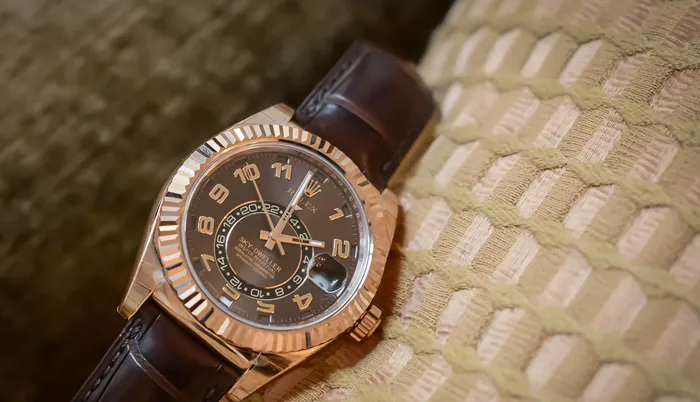Rolex is more than a watch brand. It is a symbol of precision, luxury, and status. For over a century, Rolex has led the way in watchmaking, building a reputation that combines Swiss craftsmanship with timeless style. But beyond the beauty and function lies another element that fascinates collectors and enthusiasts alike: value.
While many Rolex models are expensive, some reach astronomical prices. These rare pieces don’t just tell time. They tell stories. They speak of history, rarity, celebrity, and investment.
So, how much is the most expensive Rolex ever sold? What makes it worth so much? And how does it compare to the brand’s other high-value models? Let’s dive deep into the world of Rolex and uncover the watches that command millions.
The Rolex Legacy
Hans Wilsdorf founded Rolex in 1905 in London. The company moved to Geneva, Switzerland, in 1919. From the start, Wilsdorf wanted to create reliable and elegant wristwatches. He succeeded.
Rolex introduced many innovations. In 1926, it launched the Oyster, the world’s first waterproof wristwatch. In 1931, it invented the Perpetual rotor, the basis for today’s self-winding watches. These innovations built the foundation for Rolex’s enduring success.
Over time, Rolex became more than a timepiece. It became a mark of achievement. Professionals, explorers, athletes, and world leaders wore Rolex watches. Today, Rolex remains one of the most recognized luxury brands globally.
Why Are Rolex Watches So Expensive?
Several factors make Rolex watches expensive:
- Craftsmanship – Rolex watches are made with precision and care. It can take a year to produce one watch.
- Materials – Rolex uses high-quality materials, including 18k gold, platinum, and its own stainless steel blend called Oystersteel.
- Innovation – Rolex constantly innovates. From new materials to better movements, it stays ahead.
- Reputation – The brand’s strong heritage adds value.
- Demand – Demand often exceeds supply. Limited availability drives up prices.
But some Rolex watches go far beyond even the brand’s usual pricing. These are often rare, vintage models or special editions.
The Most Expensive Rolex Ever Sold: Paul Newman’s Daytona
The most expensive Rolex ever sold is Paul Newman’s Rolex Daytona. It sold for $17.8 million in 2017 at a Phillips auction in New York.
Why Was It So Expensive?
- Celebrity Ownership – Paul Newman was a Hollywood legend and a racing enthusiast. His name is now closely tied to this watch model.
- Historical Value – This exact watch was a gift from Newman’s wife, Joanne Woodward. She had it engraved with “Drive Carefully Me.”
- Condition and Rarity – It was well-preserved and is one of the most iconic vintage Rolexes.
- Collector Demand – The Paul Newman Daytona was already one of the most sought-after models before this particular watch went to auction.
Other Ultra-Expensive Rolex Watches
While Paul Newman’s Daytona is the crown jewel, several other Rolex watches have fetched millions. Here are a few notable examples:
1. Rolex Daytona “The Unicorn” – $5.9 Million
- Reference: 6265
- Year: 1970
- Case Material: 18k white gold (very rare)
- Unique Feature: Only one known to exist in white gold
- Auction: Sold by Phillips in 2018
2. Rolex Bao Dai – $5.1 Million
- Reference: 6062
- Year: 1952
- Case Material: Yellow gold
- Unique Feature: Owned by the last emperor of Vietnam, Bao Dai
- Special Dial: Diamond markers and moonphase display
3. Rolex GMT-Master II Ice – $485,350
- Reference: 116769TBR
- Year: Released in the 2000s
- Case Material: White gold
- Unique Feature: Fully encrusted with diamonds
- Not Vintage: Still commands a high price due to materials and design
4. Rolex Antimagnetique Ref. 4113 – $2.5 Million
- Year: 1942
- Case Size: 44mm
- Unique Feature: Only 12 pieces ever made
- Purpose: Made for racing teams, not for public sale
5. Marlon Brando’s Rolex GMT-Master – $1.95 Million
- Model: GMT-Master
- Film: Worn in “Apocalypse Now”
- Unique Feature: Missing bezel and hand-engraved back
- Sold in 2019
What Makes a Rolex Worth Millions?
Several key factors contribute to ultra-high Rolex prices:
1. Provenance
Who wore the watch? If it belonged to a famous figure like Paul Newman or Marlon Brando, the value skyrockets.
2. Rarity
Limited production models, rare materials, and one-of-a-kind pieces are more valuable.
3. Condition
Well-maintained vintage watches fetch higher prices. Original parts and minimal restoration matter.
4. Historical Significance
Watches tied to important events or eras gain historical value.
5. Design and Features
Complications like moonphases, chronographs, and unique dials increase a watch’s value.
Rolex as an Investment
Luxury watches, especially Rolex, are now seen as investment assets. Some reasons:
- Appreciation: Many vintage Rolexes increase in value over time.
- Rarity: Discontinued models become collector’s items.
- Market Stability: Rolex has a strong resale market.
- Tangible Asset: Unlike stocks, watches are physical and wearable.
However, not every Rolex becomes a million-dollar piece. Investment value depends on the model, condition, documentation, and market trends.
Modern Rolex Models That May Rise in Value
1. Rolex Submariner (No Date)
- Simple, classic, and highly collectible.
2. Rolex Daytona (Steel)
- Continues to be in high demand with long waitlists.
3. Rolex Sky-Dweller
- Features dual time zones and an annual calendar.
4. Rolex Milgauss
- Recently discontinued; collectors expect prices to rise.
5. Rolex Explorer
- Rugged and historically significant. A favorite among purists.
Conclusion
The most expensive Rolex, Paul Newman’s Daytona, sold for $17.8 million, showing how powerful a mix of heritage, rarity, and celebrity can be. Other Rolex models, though not as costly, still reach into the millions.
Rolex watches are not just luxury items. They are investments, pieces of history, and symbols of status. Whether you buy a new model or hunt for a vintage gem, understanding what makes a Rolex valuable is key to appreciating its true worth.
So, how much is the most expensive Rolex? Nearly $18 million. But to many collectors, it’s priceless.


